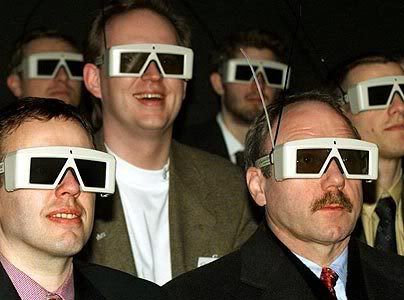3D movies are quickly becoming a major moneymaker for the struggling industry. With the current state of the economy going down like a cheap twenty-five dollar hooker, the Studios are looking to the new 3D technology to keep the industry “recession proof.” The film industry did very well during the first American Great Depression, but not because movies were a great distraction from the fear of death by starvation. They did well because “talkies”, or movies with sound, were new technology at the time. Last year 3D movies took in only about 200 million dollars but this year over 15 titles from major studios will be literally “in your face”, launching the projected gross to over $1 billion. That being said, the fact is that 3D movies will be here to stay. Not bad for a technology that’s about 200 years old. As the studios look to the future of 3D movies, we will take a look back at the history of stereoscopic movies.
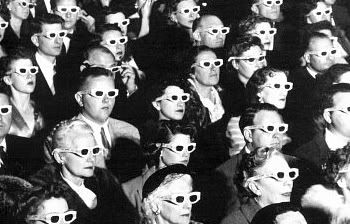
Stereoscopic, or 3D photography works to trick the eyes into seeing depth. We as human beings naturally see the world in 3 dimensions because we happen to be blessed with two eyes. (Unless you are one of the more unfortunate pirates.) The eyes are set about two and a half inches apart, so each one sees from a slightly different distance. It is this called Stereopsis, or retinal (binocular) disparity, and this is one of the ways the brain judges distances. If you were to take two pictures at the same slight difference apart, and were to look at it through the aid of a viewer, you will achieve the illusion of depth.

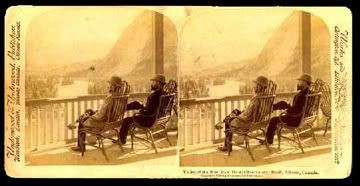
The funny thing is that stereoscopy preceded photography by over 200 years. Giovanni Battista della Porta who lived from 1538 to 1615 made binocular drawings while the first known photo was taken by Joseph Nicéphore Niépce in 1825. It did take until 1838 for Sir Charles Wheatstone to invent the first stereoscope to actually view images in 3D, though. Stereoscopes became all the rage after Queen Victoria and Prince Albert were presented with one by Sir David Brewster, the person who conceived of the binocular camera. (Nerd Fact: the penis skewering piercing was named after Prince Albert because he supposedly had one because he had a giant cock. People wore their pants really tight back then, much like asshole teenagers do today, but they didn’t like unsightly bulges. The ring through the penis was used to hold it to one side or the other by the use of a hook in the pants. This might just be an urban legend, but it’s still fun to think about.) Because of Sir David Brewster’s gift, by the mid 1850s stereoscopes were the entertainment centers for over a million homes.


Moving pictures wouldn’t adopt stereoscopy until William Friese-Greene developed a technique for it in the late 1890’s. This involved two projectors firing off side by side on the same screen. The viewer had to use a stereoscope to merge the film into 3D. This was too mechanically complex, so it was never adopted by movie theaters. 3D films were shown to audiences here and there as testes, but it wasn’t until the 3D film The Power of Love, that people actually started paying for it in 1922. It was also the first time a film utilized dual strip projection to create that annoying red/green effect that caused a mind-numbing headache for the viewer. They even had to use those silly red/green glasses for the first time, and they weren’t the cardboard kind.
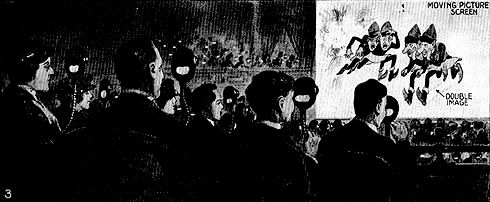
The “Golden Era” of 3D films started on 1952 with Bwana Devil, the first color full-length feature. The 50’s were the decade that had full-blown 3D fever; much like the Pac-Man fever of the 80’s. This was so much the case that familiar red/ blue cardboard glasses are now seen as an iconic image of the period along with the pompadour, poodle skirts, and “whites only” signs. The most notable 3D movies of the time were Columbia’s, Man in the Dark, a noir drama that abused the medium with stuff thrown at the audience for no reason, and Warner Bros.’ House of Wax, the first 3D movie to feature stereophonic sound. House of Wax starred the great Vincent Price. This was the movie that typecast his ass to a lifetime of playing horror roles. Vincent Price was also the “King of 3D”, the actor to star in the most 3D films.

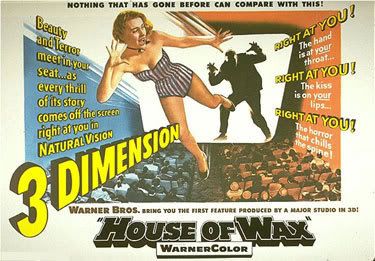
1970 a new company called Stereovision created a new 35mm 3D format. This new process was much cheaper to produce than previous 3D films. Their first movie was, of course, softcore porn. All new technology must pass the porn test, otherwise people won’t care. The Stewardess is a fun sex comedy romp released in 1969 that was was a simple skin flick shown only in adult theaters. It did so well in the dark confines of the jerk-off house in opening months that filmmakers Louis Sher and Silliphant decided they could sell this movie to a wider audience as a rated R movie. The Stewardess was made for just over $100,000 and grossed over $27 million — making it the most profitable 3D movie ever.


The success of Stereovision brought back a short lived revival in the 80’s with such cash-in movies as Amityville 3D, Friday the 13th Part 3D, and everyone’s favorite, Jaws 3D. Hollywood just can’t help themselves when they have an opportunity for a punny title and moneymaking stunts.
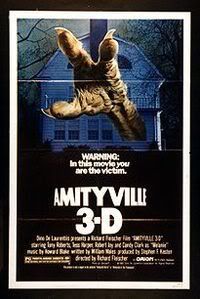
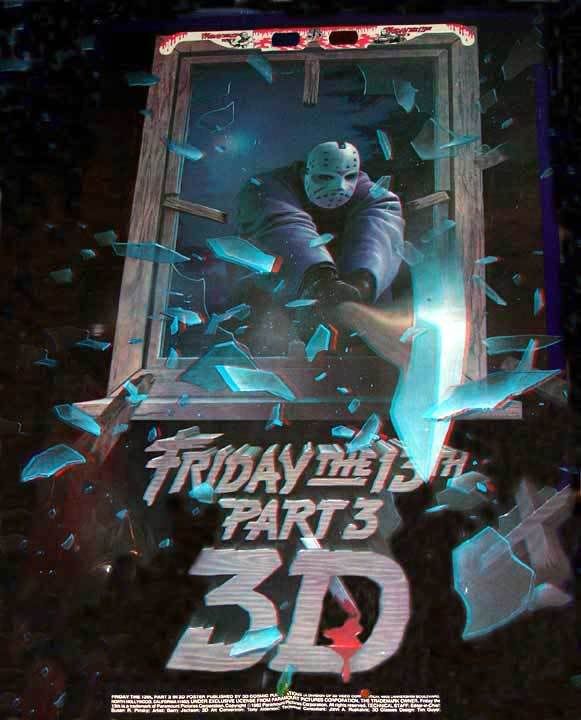

People may notice that 3D movies do not have the red and blue channels offset to produce depth anymore (and the major bonus – no skull-pounding headache!) To whom do we owe this revolution of cinema technology? The same guy who gave us The Terminator, The Abyss and unfortunately, Titanic, James Cameron. After winning an Oscar and having Titanic gross more money than China has tea you’d think he’d be done with the Titanic, but no. Apparently obsessed with Titanic madness, he decided we wanted to see the real thing when we saw boat disaster movies and invented a few new bits of technology to do it. James Cameron’s Ghost of the Abyss was the first full length IMAX to be filmed with the Reality Camera System, a system that uses HDTV video cameras.
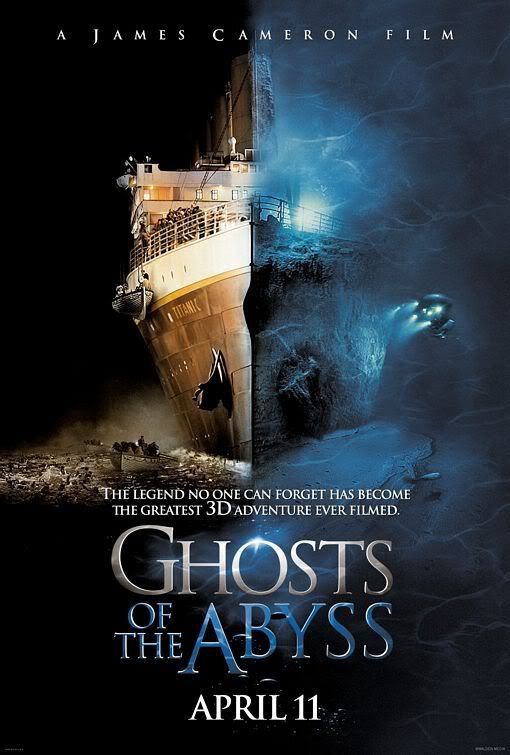
New Digital 3D Systems use polarization to fool the eye instead of color channels. Polarization allows only light waves aligned in a specific direction to pass through and each lens on the glasses is polarized differently. Special digital projectors are used to create the double image we see on screen. Our brain does all the rest of the work by blending the images into one single, seamless, moving, three-dimensional image

With the development of Digital 3D Systems in theaters, the flood gates for 3D movies are open once again. The amazing thing about the new format is that films previously shot for 2D can be converted to 3D at reasonable cost. This will allow studios to make money on ticket prices for movies we have already seen and own on DVD and we are actually happy for it. You know damn well Lucas is going to dip back in the well and release Star Wars in digital 3D…and I will be the first in line (well, fifteenth).
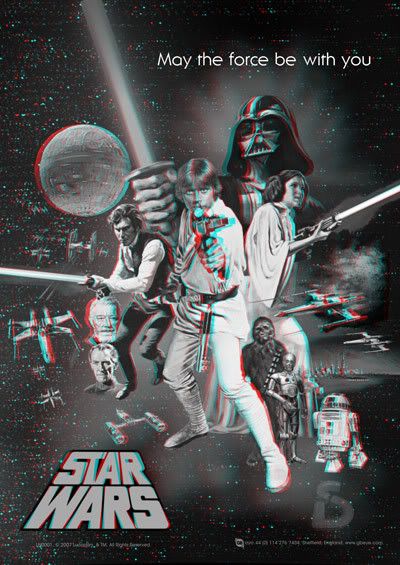
As the system of stereoscopic movies improves, more and more movies are going to be 3D. It might even be possible to watch 3D movies without the need for glasses in the very near future. According to an article by Martin Moylan for Minnesota Public Radio, 3M is already working on it. Expect the first wave of small screen 3D devices in the next year or so. So where does that leave our beloved 2D movies? Will everything become something akin to holographic projections? It just might! And 2D movies might go the way of the BW pictures, but, as Enya would say, only time will tell.
